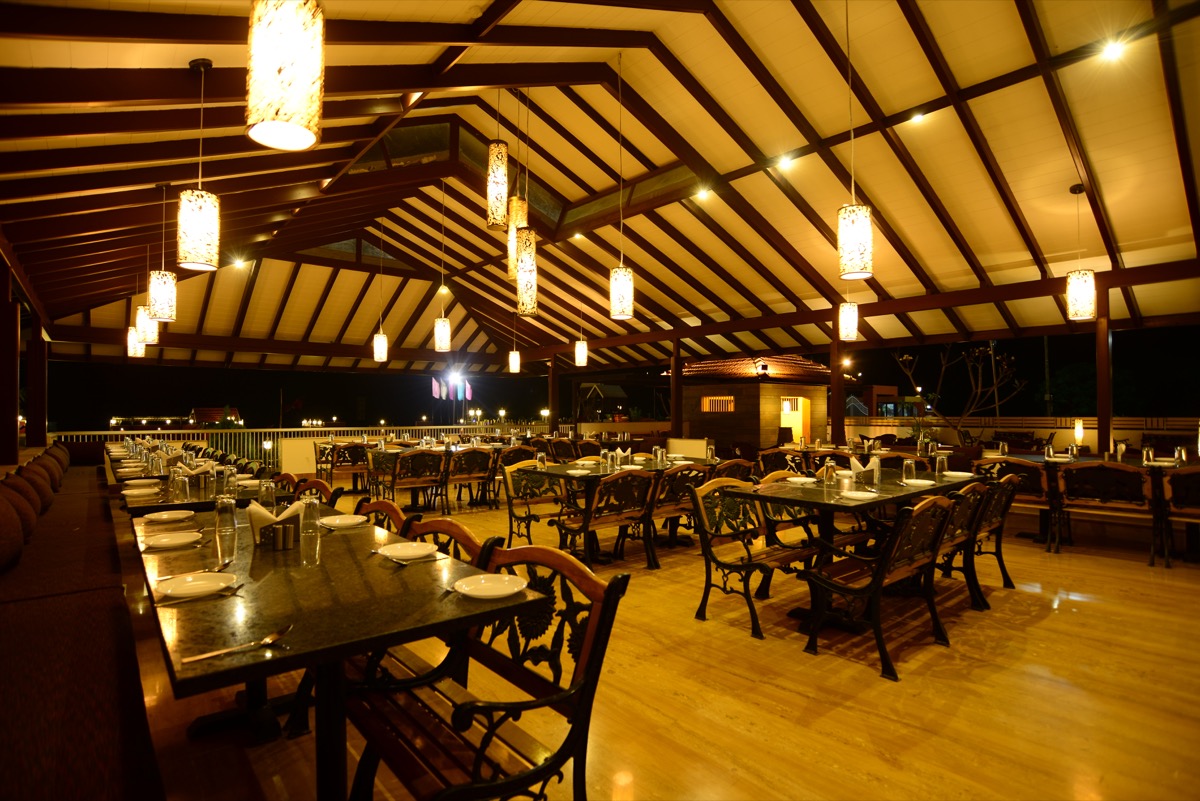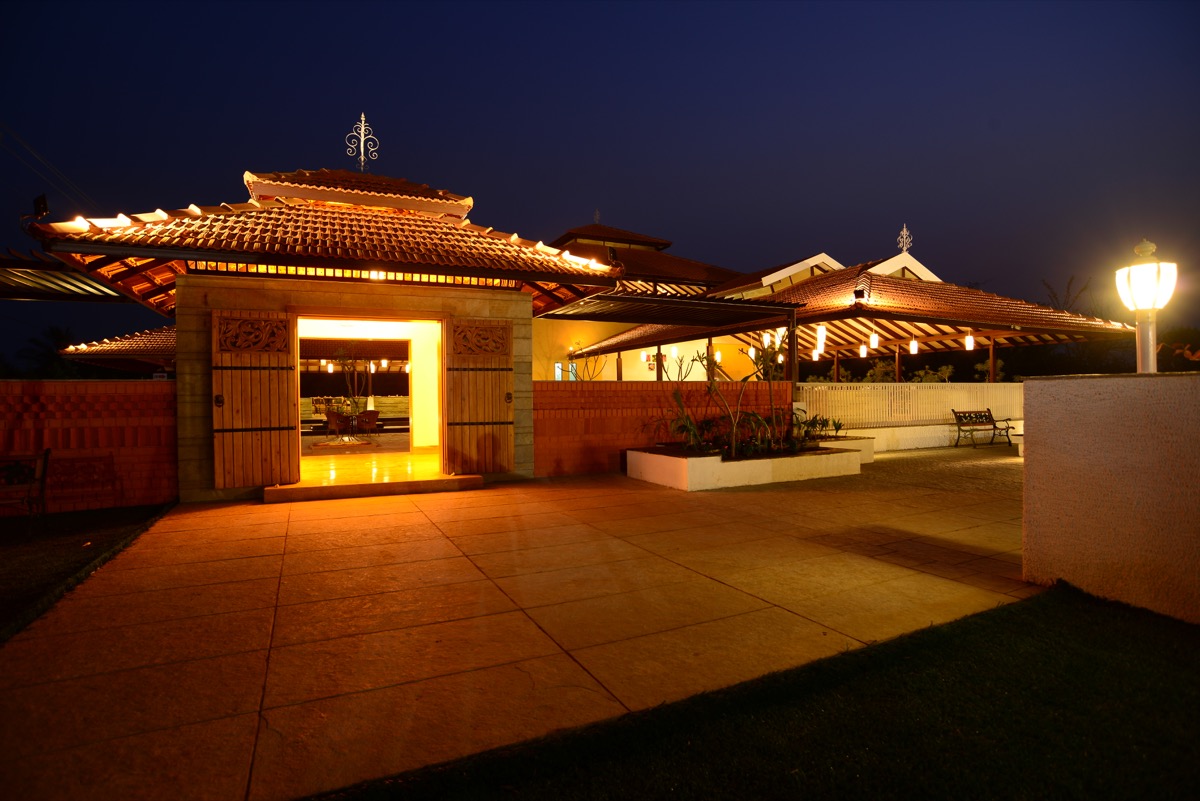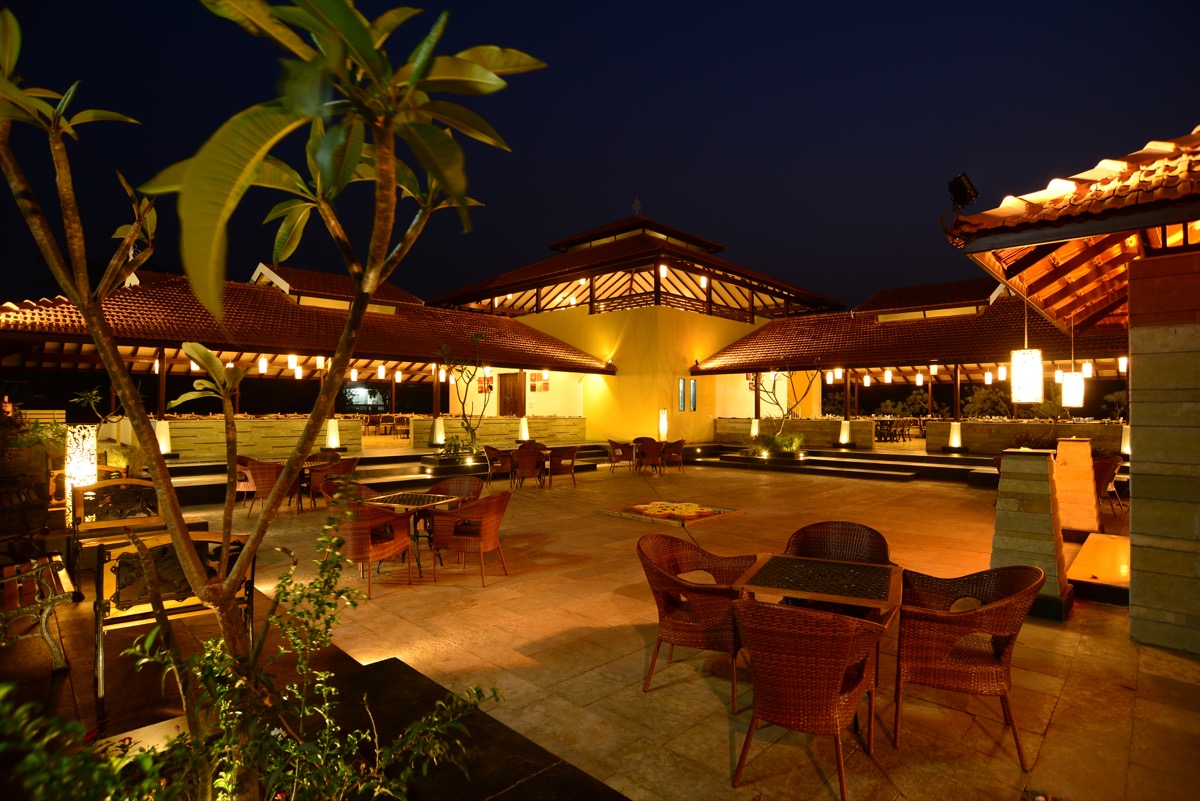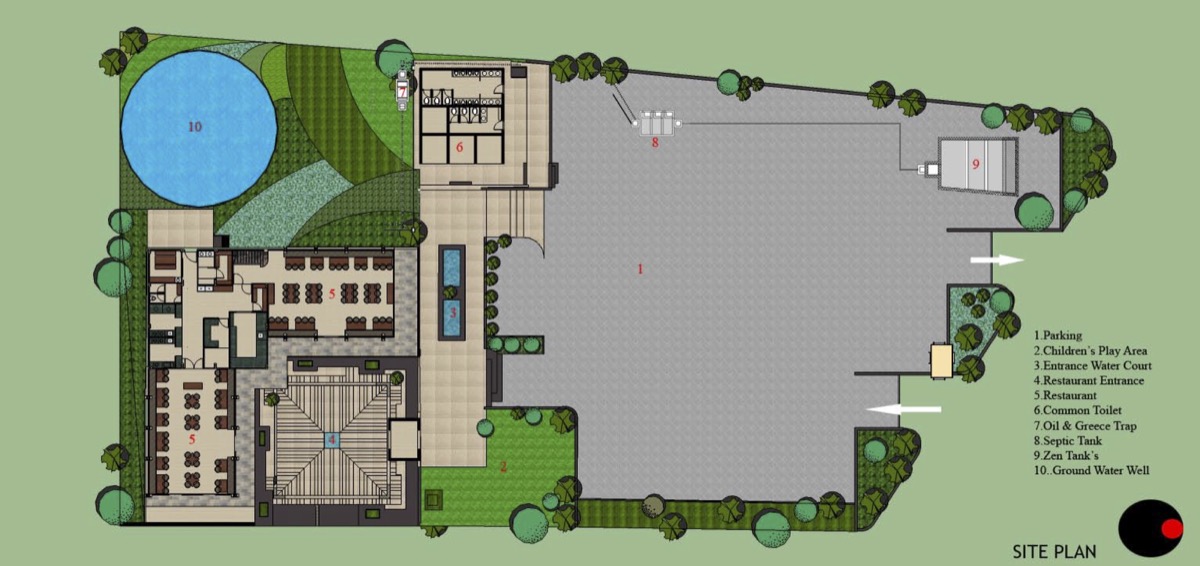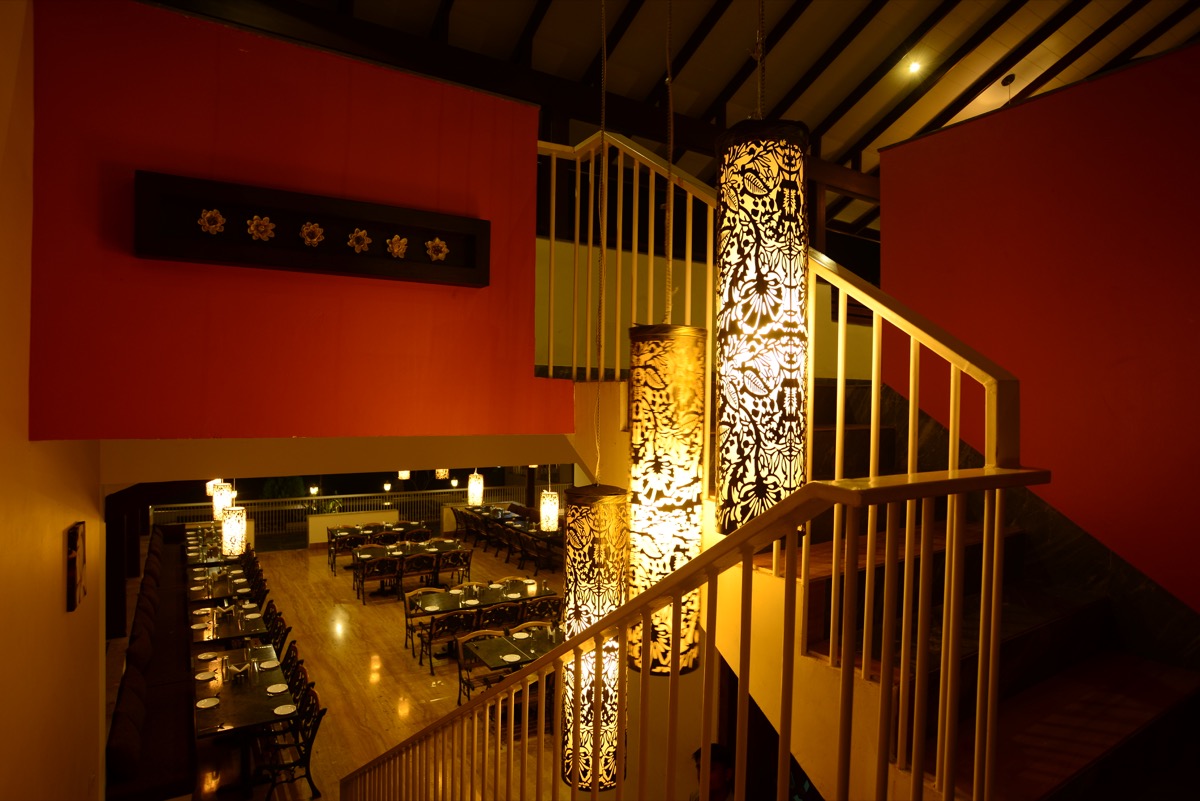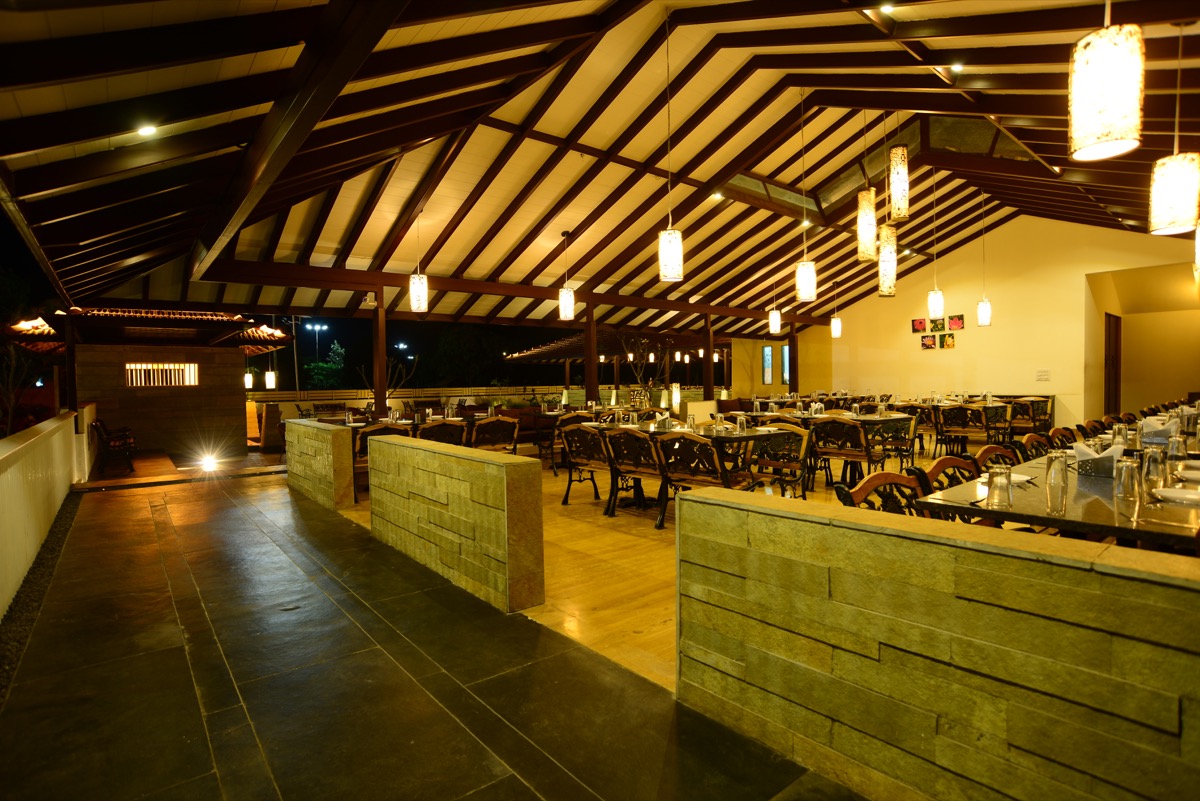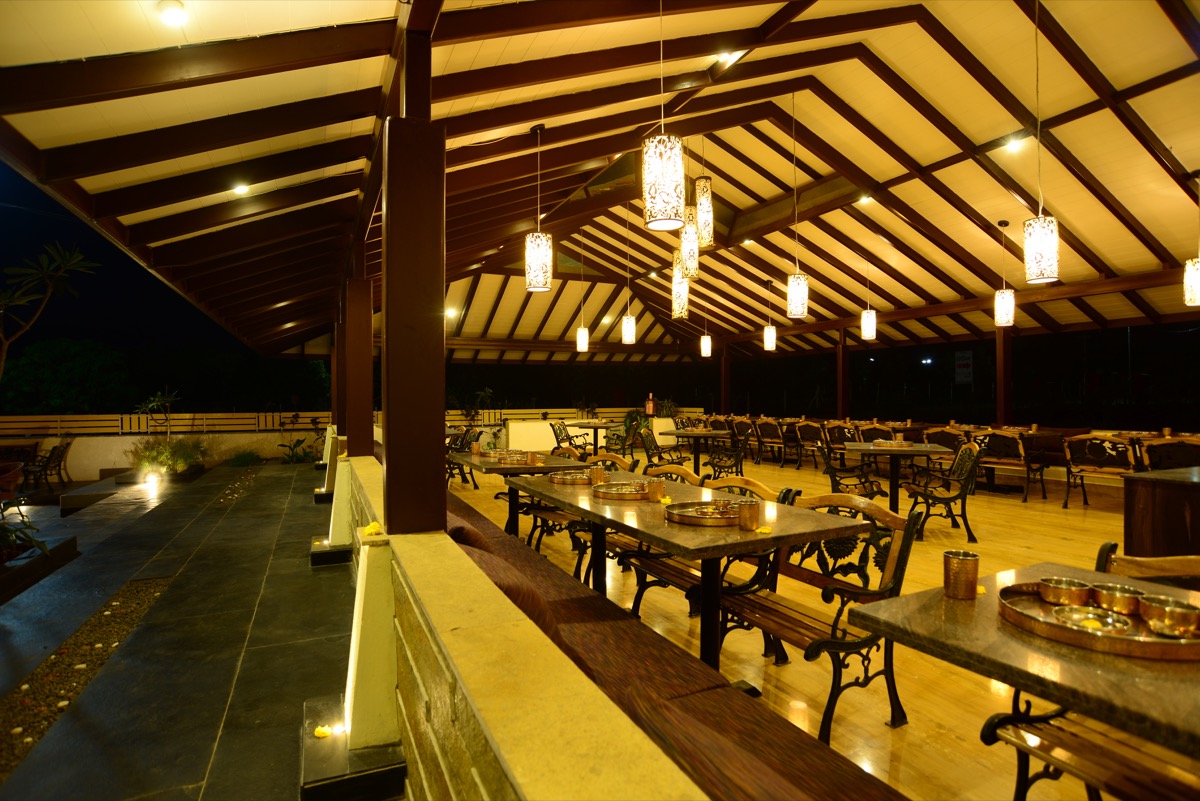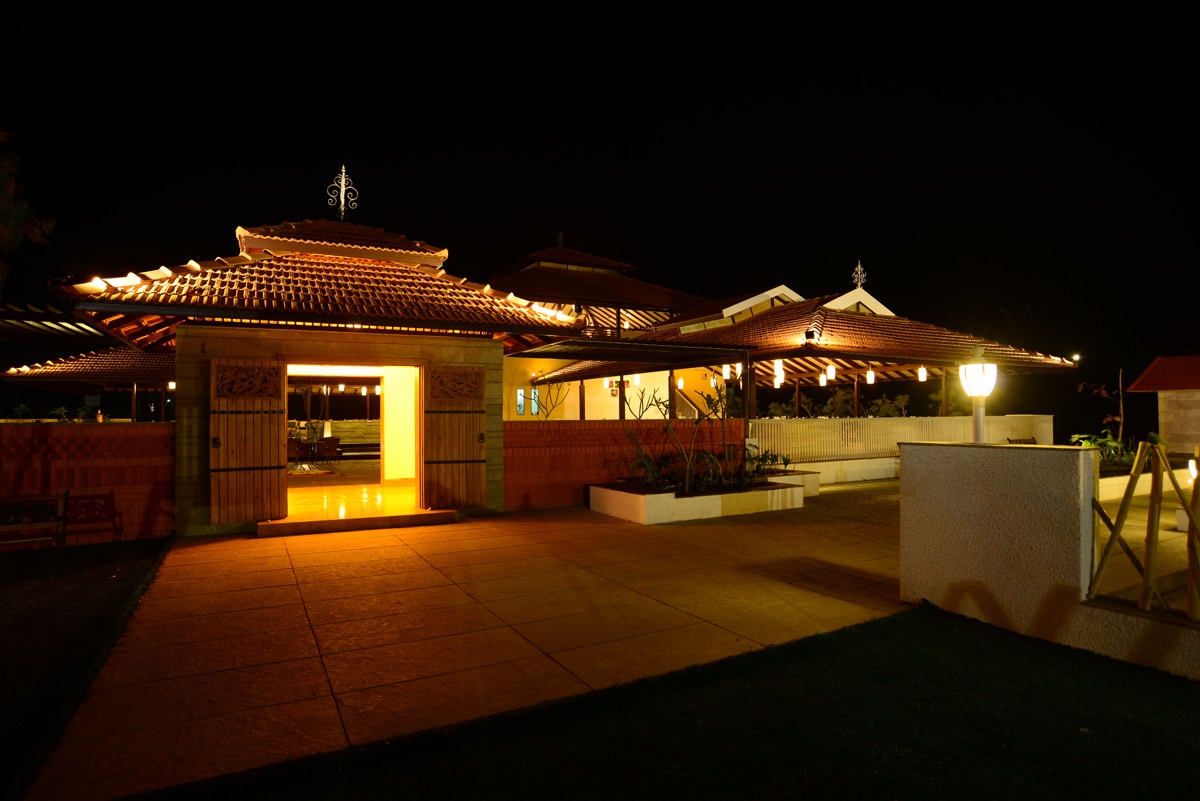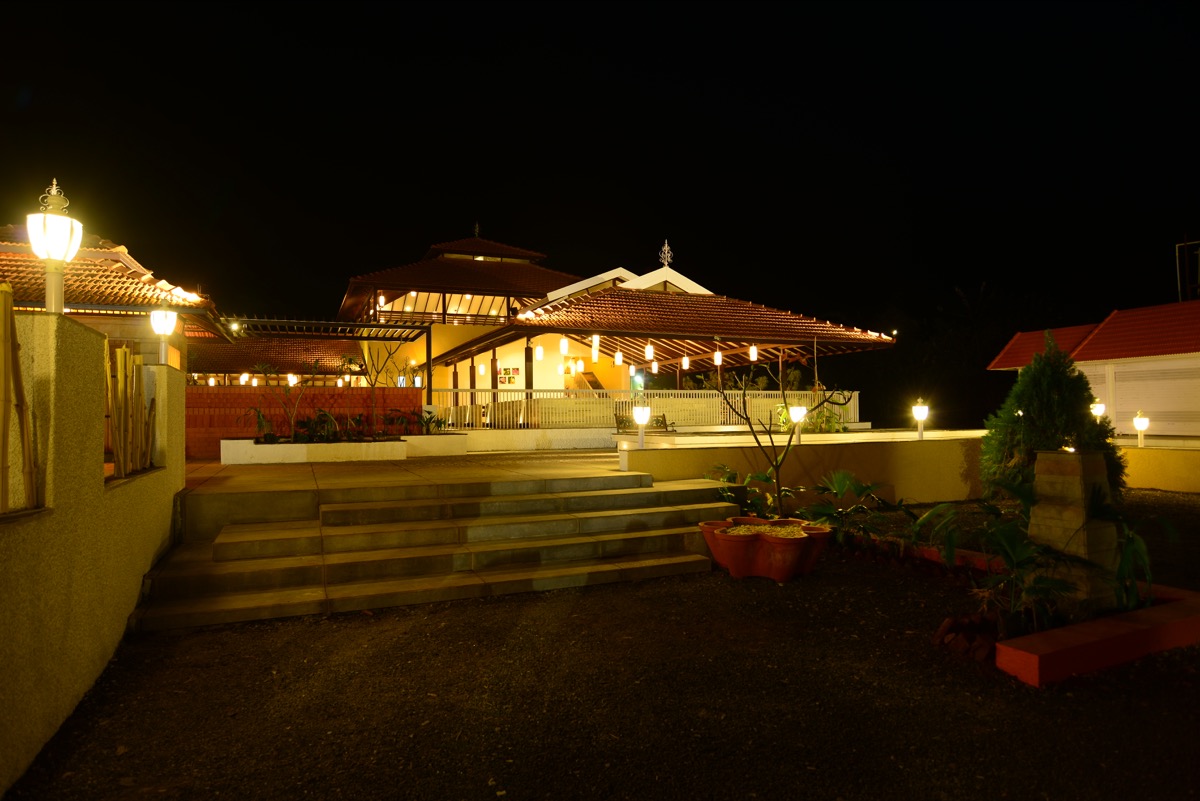Market Brief
The restaurant is located on the national highway connecting Ghoti and Shirdi, as part of a project for second homes, and is supposed to cater to the needs of the bungalow/villa owners during their stay here. This would, therefore, cause the market for the restaurant to be limited to few people. The objective, therefore, was to create a restaurant product that is financially viable as a business and would also support the development and marketing of the project, whose USP is the presence of nearly 2,000 mature mango trees on the campus. The restaurant complex was hence developed facing the main entry of the project, with great visibility from the main highway – giving it an advantage of prosperity as a standalone business.
Development Plan
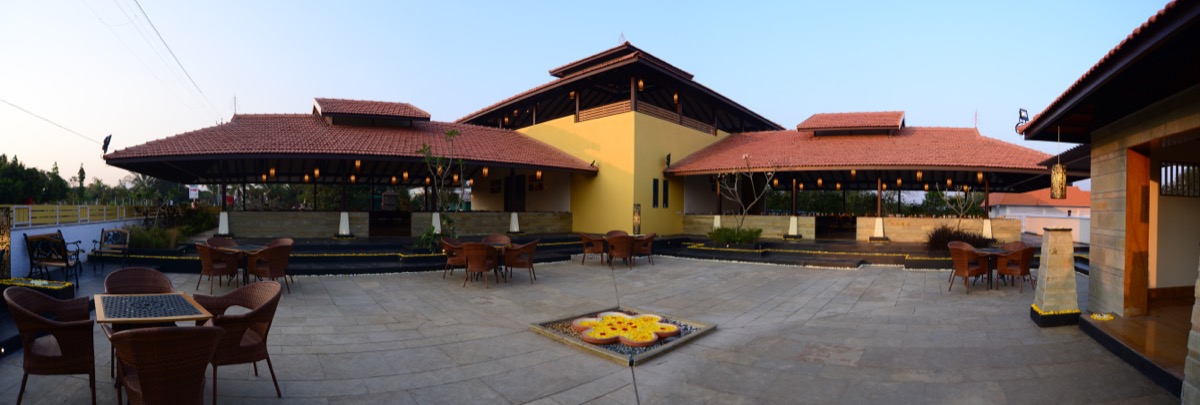
The restaurant is in a rural setting overlooking a large mango orchard. It was decided that to position the project as a premium product the highway restaurant would have to bring about the ambiance of a resort rather than a place of convenience. The main character of the restaurant was kept very Indian to reflect the ethos that the whole development would convey in addition to the fact that the client base would be mostly well-to-do pilgrims. Therefore to showcase the surroundings, to connect with the rural setting and also to highlight the genteel nature of the place, the form of the building was evolved. The sloping roofs and the very large courtyard are the focal points of the restaurant.

The entry too was made more dramatic by the subtle addition of a carefully placed welcome foyer designed like a traditional Indian home. The feeling of being welcomed was hugely enhanced by the addition of this simple element, which encourages the visitor to be at ease and relax, and makes the transition from traveller to guest very smooth. The children’s play area is located just before the entrance foyer which allows the parents to drop off the kids in a secure zone which is also visible from most of the seating areas. The play area is paved with artificial grass as protection for the children, whose vibrant color and ease of maintenance were additional benefits.
Past the entrance is a large paved courtyard which evokes the welcoming ambiance of a village home. The first impression is that of an elegant place which is not built around visible utility as is the norm in most highway restaurants but a place which is built to allow a person to relax and enjoy the surroundings.
The courtyard is the focal point of this building and all attention is directed towards it. The use of traditional natural stone like Cuddapah, Shahabad and Yellow Jaisalmer marble creates a feeling of Indian-ness. The central water body with floating flowers is fed by ingeniously-designed roof water run offs. The combination of the colors and textures of the natural stones bring a subtle drama to the space, and provides a space for large groups to gather and mingle before choosing a part of the restaurant to go to. In addition, it also performs the role of separating the two wings of the restaurant so that one wing can be used as a banqueting area, and also used as a spillover space to accommodate large gatherings from time to time.
The main restaurant is highlighted by the use of natural stone and an open planning that connects all persons sitting inside with the surroundings, and each visitor has the opportunity to connect with the adjacent development – therefore showcasing second home plots and providing an additional business opportunity for their sale.
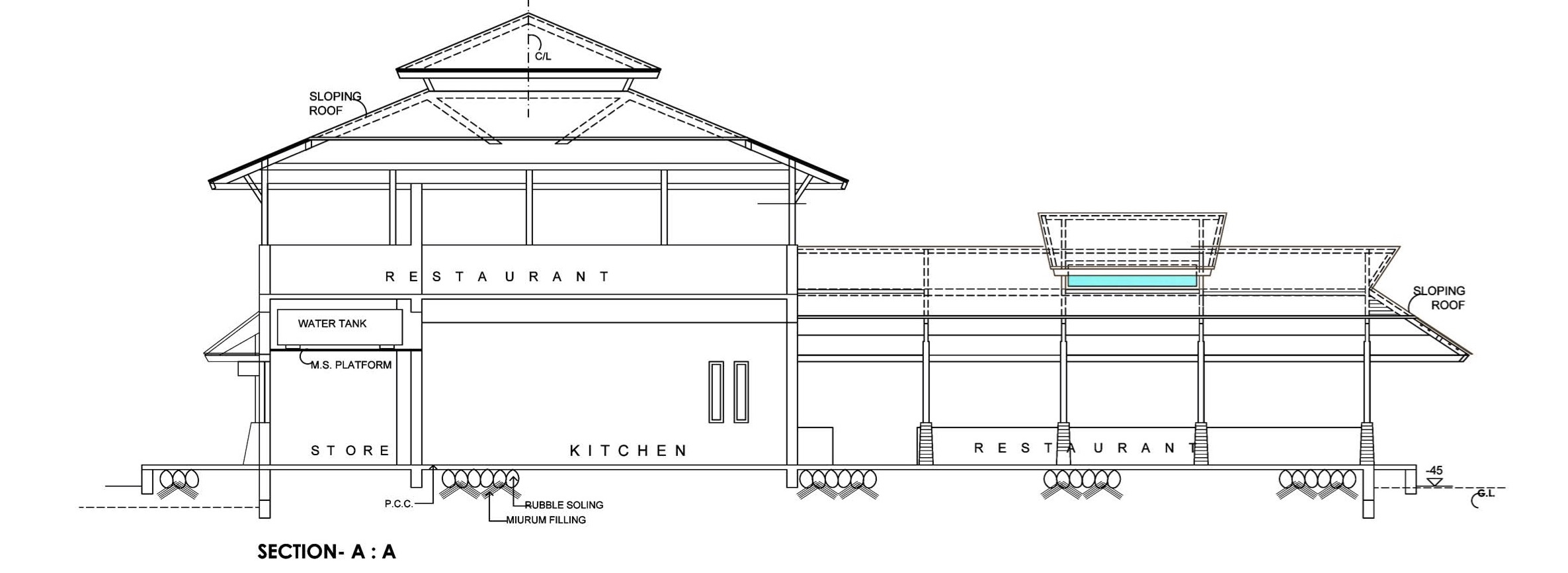

The main aim has been to keep the ambiance “ageless”; the courtyard has rattan furniture and cast iron benches which are easy to maintain, and evoke a sense of class and add to the feeling of being in a garden at the same time. The lighting in this space is also strategically placed to highlight the beauty and simplicity of the building form, with lights with a defined beam used to create a soothing experience in the night.
The two wings of the restaurant are also connected to the courtyard visually by using light fixtures that are common to all areas. The lighting is divided into task-decorative lights, and ambient lights; the specially procured decorative lights are placed exactly above each dining table, while the rest of the spaces are lit by wide beam spotlights for ambient illumination.
Great care has been taken to ensure that the circulation of guests to various supporting amenities and areas – along with staff movements – is very comfortable. The large passages available between the tables and clear visibility of all areas ensures that the functionality of the space is never compromised. The theme of these places is carried forward in the upstairs lounge area, which gives the feeling of a Machaan offering fantastic vistas of the entire property. The staircase has been made a point of interest to break any monotony that the large restaurant may create, along with the subtle use of art and placement of pictures (prints).
The kitchen has been located at the exact center of the two restaurant wings and just below the upstairs lounge, and is divided into sections to facilitate service and production.
Conclusion
Overall, the restaurant fulfills the requirement of supporting the main business plan. In addition, the ambiance and comfort of working in this area gives it an edge that will ensure that the people who are part of this environment are going to enjoy their time spent here and feel at peace. This feeling is replicated at both, daytime and evenings.
Project Facts:
Name of the project: Keshar Baug
Category: Hospitality
Name of the client: Mr.Rajendra Gothi
Stage: Completed
Site area: 5250 sq. ft.
Architects: Rakhi Takle, Neev Designs

